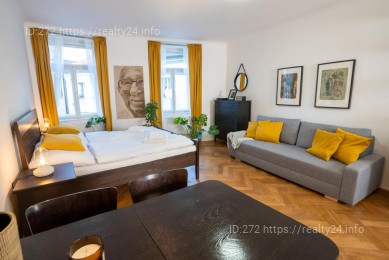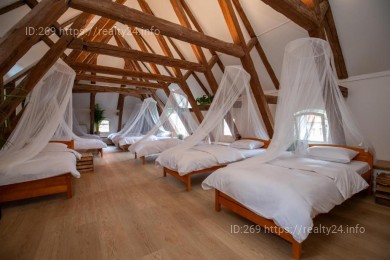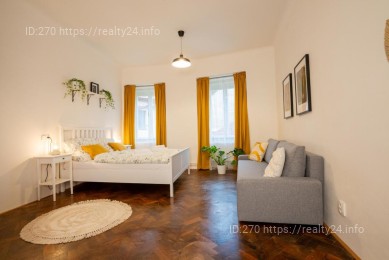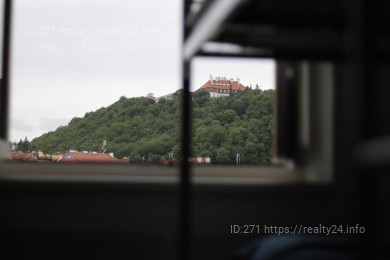Prague - Explore premier real estate
Prague (Czech: Praha) is a statutory city and the capital of the Czech Republic, the administrative center of the Central Bohemian Region and its two districts: Prague-East and Prague-West. It forms an independent administrative-territorial unit of the country.
Population: 1.331 million (2021). The fourteenth most populous city in the European Union. Situated on the banks of the Vltava River, forty kilometers from its confluence with the Elbe.
The main political, economic and cultural center of the Czech Republic. One of the largest tourist centers in Europe. The number of tourists in 2012 exceeded 5.4 million people.
Since the 10th century, the capital of the Czech State; in 1526-1918, the main city of Bohemia under the rule of the Habsburgs; from 1918 to 1992, the capital of Czechoslovakia; since 1993 - of the Czech Republic. The historic center is included in the UNESCO World Heritage List.
History
The Jewish chronicler David Solomon Gans, citing the German historian Cyriacus Spangenberg, claimed that the city was founded as Boichem in about 1306 BC by the ancient king Boia.
The first historical information about Slavic settlements on the territory of the modern city dates back to the 6th century AD.
In the 8th century, there was the legendary figure of Libuse and her husband Přemysl, who founded the Přemyslid dynasty. According to legend, Libuse predicted the foundation of a great city called Prague on a rocky cliff above the Vltava River.
Middle Ages
The Middle Ages of Prague, especially during the reign of Charles IV, were a period of growth and transformation for the city. Charles IV was not only the King of Bohemia, but also the Holy Roman Emperor, who elevated Prague to the imperial capital. He played a significant role in turning Prague into a major commercial, financial and educational centre.[15]
One of Charles IV's most significant contributions to Prague was the construction of the New Town (Nove Mesto), adjacent to the Old Town. Charles himself outlined the project, which included the construction of the Charles Bridge to replace the Judith Bridge, which had been destroyed by flooding before his reign. The Charles Bridge connected the eastern bank districts with the Lesser Town and the castle district. He also founded Charles University in 1347, which is still the oldest university in Central Europe.
The Habsburg Era
The Habsburg era in Prague began in 1526, when the Bohemian estates elected Ferdinand I of the House of Habsburg as king. This marked the beginning of a period of conflict in Bohemia, as the fervent Catholicism of the Habsburgs clashed with the growing popularity of Protestantism in Prague. However, during the reign of Holy Roman Emperor Rudolf II, who was elected King of Bohemia in 1576, Prague became a center of European culture.
20th century and beyond
After the collapse of the Austro-Hungarian Empire in the autumn of 1918 and the formation of the independent Czechoslovak Republic, Prague became its capital. The city existed relatively peacefully until the outbreak of World War II in 1939. It was liberated from German troops on 6 May 1945 by participants in the Prague National Uprising (on 9 May, Soviet troops entered Prague, which had been virtually cleared of German troops). Fortunately, the war did not leave any serious damage to the city. In 1960, Prague became the capital of the Czechoslovak Socialist Republic and remained so until 1993, when, after the "velvet divorce" of the Czechoslovak Federation, it became the capital of the Czech Republic. It was the main location of the Prague Spring of 1968, when an attempt was made to reform the Communist Party of Czechoslovakia internally, its armed suppression by the Warsaw Pact in August 1968, and then the centre of the Velvet Revolution of 1989.
Physical and geographical characteristics
Prague is spread along both banks of the Vltava River. The length of the river within the city limits is 29.8 km, the average depth is 2.75 m, the maximum is 10.5 m. Only one river flows into the Vltava in the entire territory of Prague (Berounka, a left tributary), five streams on the left bank and four on the right, along the left bank there is a canal called Čertovka [English]. The city is located on five hills (according to PIS, the Prague Information Service, on nine), divided by the river. There are nine islands on it.
Administrative divisions
Main article: Administrative divisions of Prague
The total area of Prague within the administrative boundaries of the city is 496.07 km², with the share of buildings accounting for only 48.71 km².
Prague is currently divided into 22 administrative districts and 57 city parts (the main subject of local government) within them. However, from the point of view of postal, electoral, judicial and police administrative legislation, it is still (since 1960) divided into 10 city districts.
Population and language
As of December 31, 2006, the city had a population of 1,188.1 thousand people (the population is predominantly female: there are 52 women for every 48 men).
The official language is Czech, which is spoken by almost the entire city population, Slovak (understood by the absolute majority of Czechs), German, Russian and English are also widely spoken. Yiddish can still be heard here.
The majority of believers, about 70%, are Catholic. According to the 2001 census, more than 67% of Prague residents are atheists, and another 8% could not answer this question unambiguously.
Tourism
After the start of market reforms, tourism turned out to be the fastest growing industry in the city. In just a few years, Prague turned from a little-known city on a European scale into a real mecca for tourists. According to the World Tourism Organization, by 2005 it had reached sixth place in Europe in terms of the number of visits after London, Paris, Rome, Madrid and Berlin. This was primarily due to the rapid development of the city's hotel network, which increased several times. By the beginning of 2007, it had 29 five-star, 126 four-star and more than 250 three-star hotels, with a total of 90,000 beds, as well as 4 hotels located in passenger ships moored at the pier, several motels for motorists and a huge number of boarding houses, hostels, youth hostels, campsites and apartment hotels. According to the rating of the world-famous travel operator The TripAdvisor Travelers' Choice in 2006, two Prague hotels, the Riverside Hotel and the Hotel La Palais, were included in the top ten most luxurious hotels in the world.
Education
In the Czech Republic, you can enter a gymnasium after the 5th, 7th or 9th grade of a comprehensive school. Accordingly, the education will last 8, 6 or 4 years. This type of educational institution specializes in preparing for admission to universities and is considered the most prestigious type of secondary education.
Charles University, a historical building from the end of the 14th century.
The city is a recognized center of higher education in the Czech Republic and Eastern Europe. Currently, it has 8 higher education institutions financed from the state budget.
Architecture
Prague is recognized by many experts and tourists as one of the most beautiful cities in Europe. Among the main attractions of Prague are 18 stone and steel bridges connecting the banks of the Vltava. One of the most famous, Charles Bridge, is a work of medieval architecture. The masterpiece of European Gothic architecture is St. Vitus Cathedral, the construction of which took almost 600 years. The city is famous for its fountains. Five central historical districts were included in the UNESCO World Heritage Sites in 1993 as an architectural and historical reserve.



